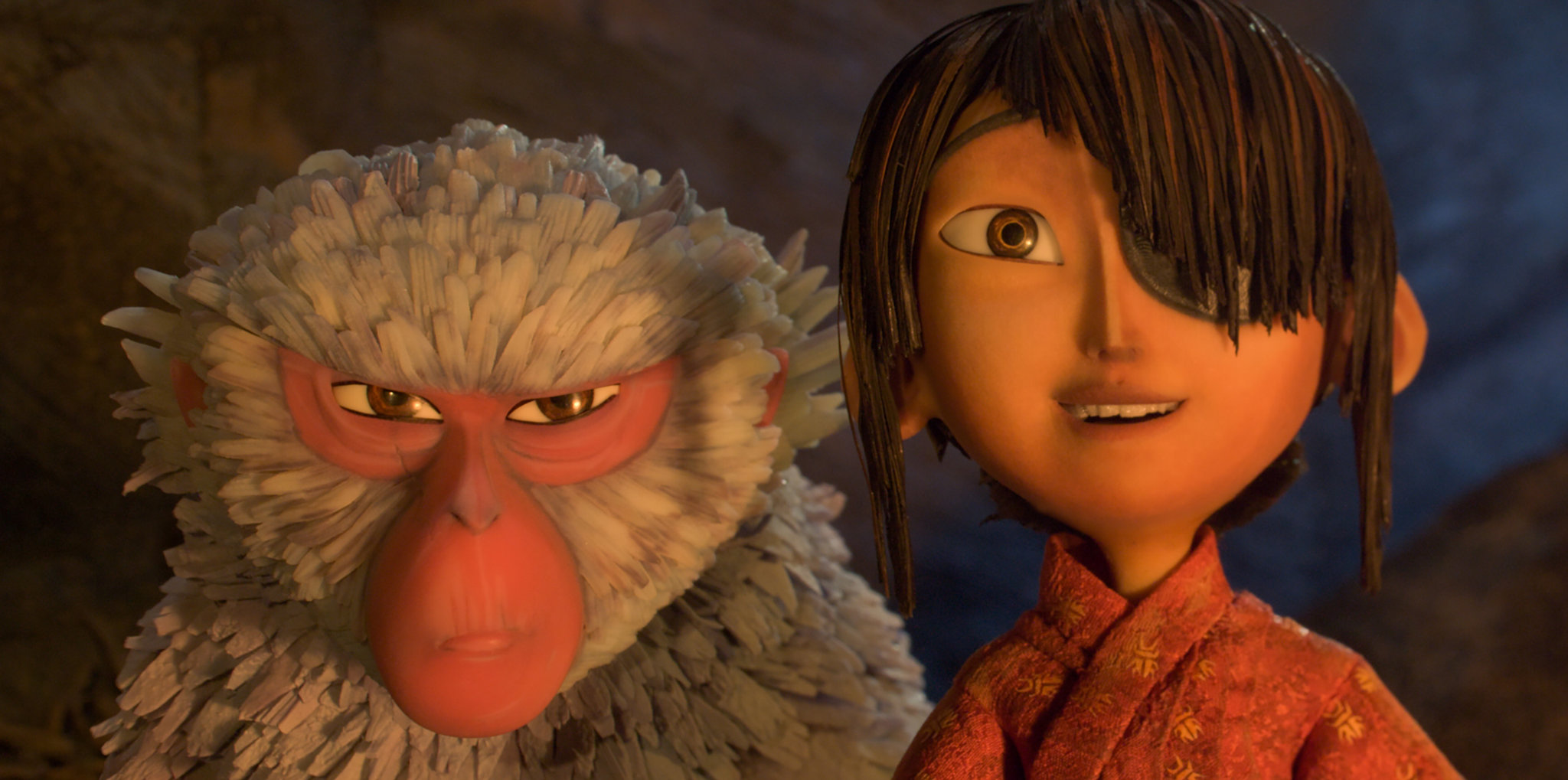Fans of Laika’s previous works, like Coraline and ParaNorman, will notice the studio’s trademark ability to capture the feeling of childhood wonder while stepping into strange and sometimes unsettling worlds. Kubo and the Two Strings follows this tradition but introduces a darker tone, reminiscent of Tim Burton’s early work, such as Edward Scissorhands or Beetlejuice.
While the film does not lean heavily on whimsy, it subtly weaves in a sense of menace that surprises the viewer, creating a delicate balance between beauty and danger. Laika’s animation is layered with small touches of eeriness that enrich the story without overwhelming it, giving the film a unique emotional and visual weight that sets it apart from conventional children’s adventures.
At the heart of the story is Kubo, a young boy who possesses a magical two-string shamisen, a traditional Japanese instrument. His quest is to recover his father’s legendary three-piece samurai armor while evading his grandfather, who seeks to kill him. While the premise may initially appear as a simple adventure, the narrative focuses on Kubo’s emotional journey rather than the external challenges he faces.
Forced to grow up before he is ready, Kubo struggles to balance his longing for a normal childhood with the responsibilities placed upon him. This tension between innocence and maturity adds depth to his character and transforms the story into a poignant coming-of-age tale that resonates with both children and adults.
Intricate Stop-Motion Animation and Emotional Depth Create Visually Stunning, Heartfelt Cinematic Experience
One of the film’s most striking qualities is its visual execution. Laika’s painstaking hand-crafted stop-motion animation creates a richly detailed world that demands attention. Watching Kubo perform his mother’s stories, the paper folds itself into samurai, animals, and creatures from Japanese folklore, bringing the stories to life in ways that puppetry or traditional animation could not.
The texture of the paper, the folds, and even the pulp are visible, emphasizing the level of detail and craftsmanship involved. Seeing the film in 3D enhances this effect, making the viewer feel immersed in a world where every object, character, and backdrop is thoughtfully created. The artistry is so intricate that moments of pause are almost unavoidable as the audience marvels at the visuals.

Kubo and the Two Strings is not just a visual experience; it is emotionally powerful from the very beginning. Much like the opening sequences of Pixar’s Up, the first half-hour delivers emotional punches that feel authentic without resorting to melodrama. The film presents the reality of caring for a parent who can no longer care for themselves with subtlety and grace.
Kubo’s daily routines, such as preparing meals for his mother, are depicted with mindfulness and precision, showing love in quiet, tangible ways. The film emphasizes themes of sacrifice, memory, and legacy, demonstrating how love and devotion manifest through simple, consistent acts rather than dramatic gestures.
Villains’ Depth and Cultural Nuance Highlight Horror, Elegance, and Emotional Storytelling Impact
The antagonists in the story are as compelling as the protagonist. Ralph Fiennes delivers a chilling performance as Kubo’s grandfather, embodying calm menace and quiet intimidation. Kubo’s aunts, voiced by Rooney Mara, represent traditional East Asian ghostly figures known as yuurei.
Their pale skin, flowing hair, and ethereal movements reflect the folklore while being adapted for a Western audience. Laika’s careful attention to these cultural nuances gives the villains depth and authenticity. Unlike typical villains, they are both eerie and elegant, combining menace with a haunting beauty that lingers throughout the film.
While the film is rich in visual and emotional detail, it does fall short in representation. Kubo, a Japanese boy, is voiced by a non-Asian actor, and aside from George Takei in a minor role, the casting does not reflect the cultural setting. Despite this, the film effectively conveys universal themes of strength, family, memory, and personal growth. Kubo’s journey is not about following in his parents’ footsteps blindly but about understanding their legacy and forging his own path.
His wisdom and courage grow organically as the story unfolds, making the narrative inspiring for viewers of all ages. With its blend of visual artistry, emotional resonance, and mature storytelling, Kubo and the Two Strings stands out as one of Laika’s most sophisticated and enduring works, appealing to both younger audiences and adults seeking a deeper cinematic experience.



